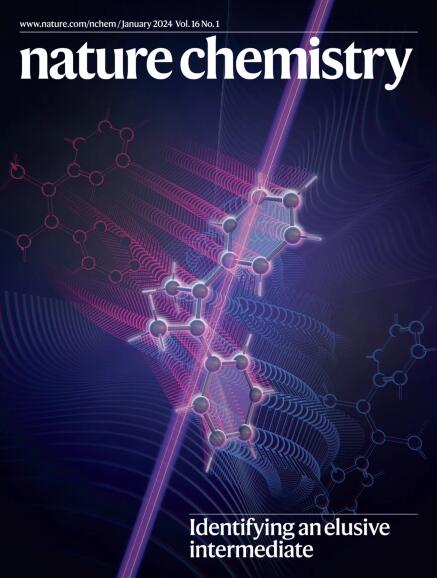Copper-catalysed asymmetric cross-coupling reactions tolerant of highly reactive radicals.
IF 20.2
1区 化学
Q1 CHEMISTRY, MULTIDISCIPLINARY
引用次数: 0
Abstract
Achieving high enantioselectivity in asymmetric catalysis, especially with very reactive species such as radicals, often comes at the expense of generality. Radicals with exceptionally high reactivity are typically unsuitable for existing asymmetric methodologies. Here we present a general catalytic approach to asymmetric radical cross-coupling that combines copper-catalysed enantioselective stereocentre resolution or formation with copper-mediated, chirality-transferring radical substitution. This sequential strategy enables the efficient coupling of over 50 distinct carbon-, nitrogen-, oxygen-, sulfur- and phosphorus-centred radicals, including highly reactive methyl, tert-butoxyl and phenyl radicals, yielding structurally diverse C-, P- and S-chiral compounds with outstanding enantioselectivity. Our method thus provides a unified platform for the synthesis of carbon, phosphorus and sulfur stereocentres, with important implications for the preparation of chiral molecules relevant to medicinal chemistry and related disciplines. Furthermore, this sequential stereodiscrimination and chirality transfer strategy offers a promising blueprint for the development of highly enantioselective methodologies applicable to other classes of highly reactive species beyond radicals.铜催化的不对称交叉偶联反应耐受高活性自由基。
在不对称催化中实现高的对映体选择性,特别是对自由基等反应性很强的物质,往往是以牺牲通用性为代价的。具有极高反应活性的自由基通常不适合现有的不对称方法。在这里,我们提出了一种不对称自由基交叉偶联的一般催化方法,将铜催化的对映选择性立体中心分解或形成与铜介导的手性转移自由基取代相结合。这种顺序策略使50多种不同的碳、氮、氧、硫和磷自由基(包括高活性的甲基、叔丁基和苯基自由基)有效偶联,产生结构多样的C-、P-和s-手性化合物,具有出色的对映选择性。该方法为碳、磷、硫立体中心的合成提供了统一的平台,对药物化学及相关学科手性分子的制备具有重要意义。此外,这种顺序立体识别和手性转移策略为开发适用于自由基以外的其他高活性物质的高对映选择性方法提供了一个有希望的蓝图。
本文章由计算机程序翻译,如有差异,请以英文原文为准。
求助全文
约1分钟内获得全文
求助全文
来源期刊

Nature chemistry
化学-化学综合
CiteScore
29.60
自引率
1.40%
发文量
226
审稿时长
1.7 months
期刊介绍:
Nature Chemistry is a monthly journal that publishes groundbreaking and significant research in all areas of chemistry. It covers traditional subjects such as analytical, inorganic, organic, and physical chemistry, as well as a wide range of other topics including catalysis, computational and theoretical chemistry, and environmental chemistry.
The journal also features interdisciplinary research at the interface of chemistry with biology, materials science, nanotechnology, and physics. Manuscripts detailing such multidisciplinary work are encouraged, as long as the central theme pertains to chemistry.
Aside from primary research, Nature Chemistry publishes review articles, news and views, research highlights from other journals, commentaries, book reviews, correspondence, and analysis of the broader chemical landscape. It also addresses crucial issues related to education, funding, policy, intellectual property, and the societal impact of chemistry.
Nature Chemistry is dedicated to ensuring the highest standards of original research through a fair and rigorous review process. It offers authors maximum visibility for their papers, access to a broad readership, exceptional copy editing and production standards, rapid publication, and independence from academic societies and other vested interests.
Overall, Nature Chemistry aims to be the authoritative voice of the global chemical community.
 求助内容:
求助内容: 应助结果提醒方式:
应助结果提醒方式:


